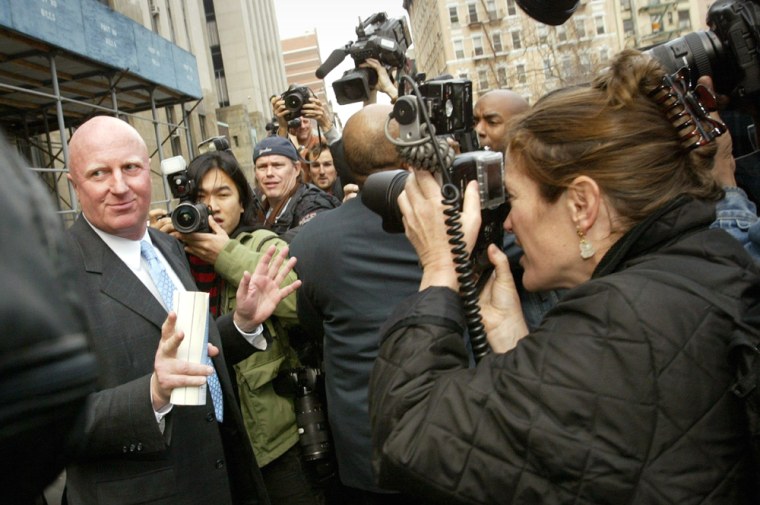With six months of work undone by a mistrial, state Supreme Court Justice Michael Obus considered the future of the legal system.
He had watched, unable to do anything, as two newspapers published the identity of a juror in the Tyco corporate corruption trial, and as the juror was trashed in one newspaper story as a "batty blueblood" and was denigrated in Internet chat rooms.
"I'm concerned about what effect this may have on jury selection in the future, and jury service in the future," the judge said in court Friday just before he declared the mistrial.
Legal experts suggested there could be one quick effect: less media access to panelists.
"In the future, the judges might be more careful about revealing the identity of jurors," attorney Ed Hayes, a Court TV analyst, said in an interview. "It sure was an unfortunate incident, and the name should not have been printed."
First Amendment attorney Floyd Abrams agreed that the factors that led to the downfall of the Tyco trial could alter the way some judges do business.
"It's possible that some judges might seek to impose greater limitations on public access to information about jurors," Abrams said. "But it would be a grave mistake to limit information because a single trial went off the tracks."
"I hope it is understood and remembered that this was a one-of-a-kind case," Abrams said. "Law shouldn't be based on idiosyncratic and possibly never-to-be-repeated situations."
Protecting jurors from the spotlight often is a concern of judges, particularly in cases where there's heavy media interest.
At this year's Martha Stewart trial, U.S. District Judge Miriam Cedarbaum banned reporters from sitting in on jury selection. Instead, a transcript of the Q&A _ with the jurors' names deleted _ was issued the next day.
A federal appeals court later ruled that the news media should have been given access to the Stewart jury selection, saying that such openness helps guarantee a fair trial. Seventeen media organizations, including The Associated Press, had argued that high public interest should not close the process.
During the O.J. Simpson trial in California, Judge Lance Ito was infuriated when a picture of an alternate juror's face was broadcast. He angrily threatened to pull all cameras out of the courtroom but later relented.
"Access might become more restrictive, at least in a high-profile case," said trial attorney Timothy Donohue, who followed the Tyco case closely. "In a long case, judges are not going to want anything that could prevent the jury from reaching a verdict."
Although there is no law banning the media from identifying jurors, it's long been accepted that their names are kept out of the public eye until the trial ends.
"You see now what happens when those conventional rules fall apart," said David Bookstaver, spokesman for the state Office of Court Administration.
The New York Post and The Wall Street Journal identified Tyco trial juror No. 4, Ruth Jordan, after a series of notes from the jury indicated the panel was on the verge of implosion over a conflict with one of its members.
While many blamed the media for the mistrial, a Journal spokeswoman dismissed the charge.
"We have no idea what the impact of the publication of her name had on jury deliberations," said Brigitte Trafford, vice president of corporate communications for Dow Jones & Co., which publishes the Journal.
The Post's front page story, with the headline "Ms. Trial" and an artist's rendition of Jordan flashing an OK sign, was impossible to ignore _ even for the jurors.
"It was hard to walk down the street in New York without seeing the front page of the paper," juror Peter McEntegart said Friday after the mistrial was announced.
